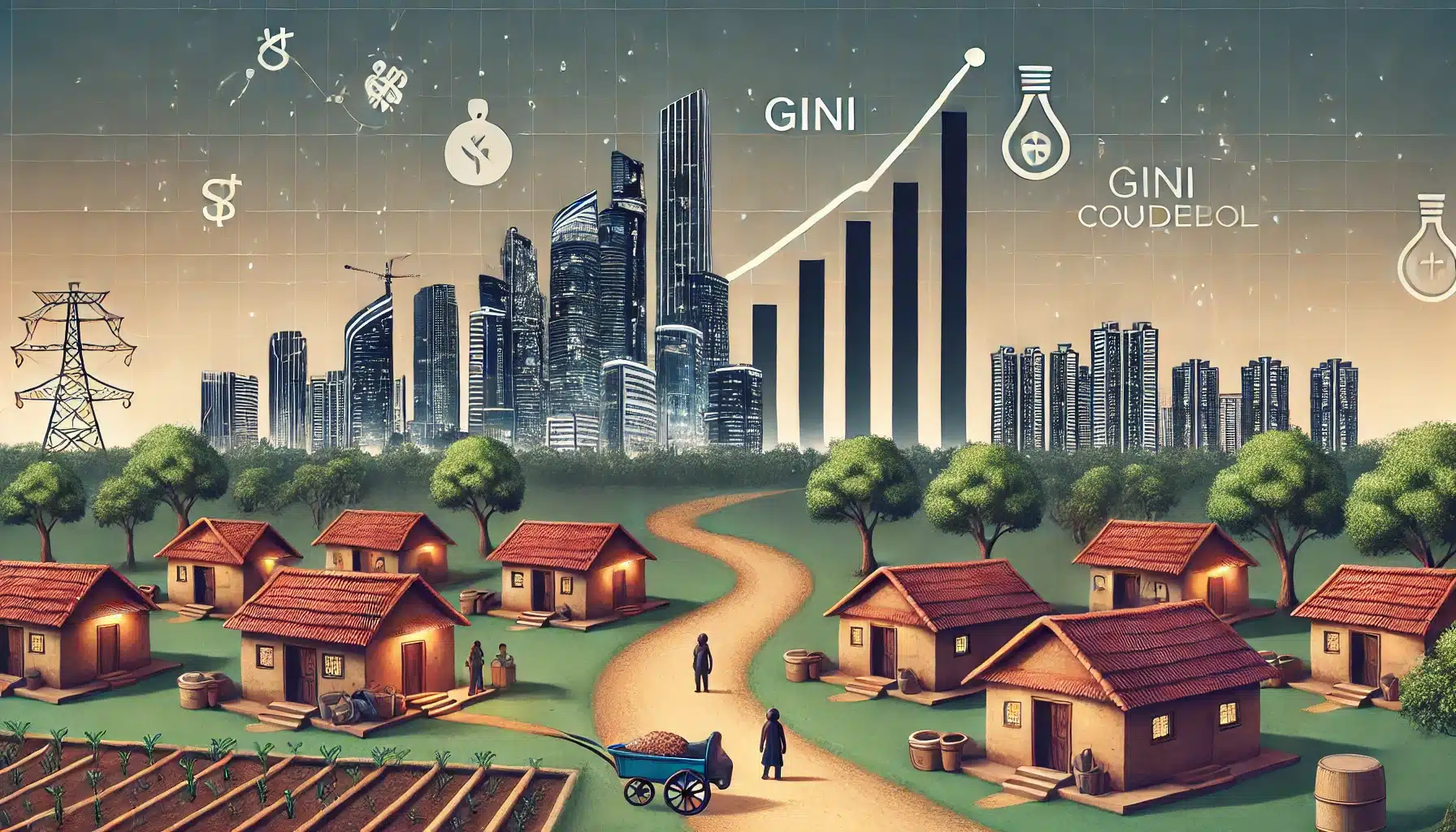India’s income inequality in 2023 remained higher than in the 1950s, according to a working paper released by the People Research on India’s Consumer Economy (PRICE). Using data from household income surveys conducted by the National Council of Applied Economic Research (NCAER) and PRICE, the paper shows that the Gini coefficient — a measure of income inequality — stood at 0.410 in 2023, compared to 0.371 in 1955. During the pandemic in 2021, the Gini coefficient spiked to 0.528, indicating a sharp rise in inequality.
The Gini coefficient measures how income distribution in a population deviates from perfect equality. A value of 0 represents perfect equality, while 1 implies complete inequality. Higher values reflect greater disparity.
The report highlighted that wealth remains concentrated among the top income earners, while the bottom 10% of households continue to struggle. The share of income held by the bottom 10% fell from 3% in 1955 to 2.38% in 2023. However, the share of the bottom 50% increased slightly from 22% to 22.82% during the same period.
Rural inequality has grown significantly, with the Gini coefficient rising from 0.341 in 1955 to 0.405 in 2023. In contrast, urban inequality showed a marginal decline from 0.392 to 0.382. “Investments in education, healthcare, and rural infrastructure, coupled with progressive taxation and social safety nets, are critical to ensuring equitable growth,” the paper noted.
Social welfare schemes such as the Mahatma Gandhi National Rural Employment Guarantee Act (MGNREGA), direct benefit transfers, and financial inclusion initiatives have played a role in marginally improving the income share of the bottom 50%. However, the paper emphasizes that sustained and adaptive policymaking is necessary to bridge income gaps effectively.
Rajesh Shukla, CEO of PRICE, described India’s economic trajectory as a “seesaw” of progress and setbacks. While post-pandemic improvements offer hope, external disruptions and policy gaps continue to challenge sustained equitable growth.
The paper also criticized model-based estimates, such as those from the World Inequality Database (WID), for overstating inequality by focusing heavily on top income earners and neglecting the informal economy. According to WID, the top 1% controlled 22.6% of national income in 2023. However, survey data from PRICE and NCAER estimate this share at just 7.3%.
These findings highlight the urgent need for inclusive economic strategies. Addressing entrenched disparities requires targeted investments in rural areas, reforms in wealth distribution, and policies aimed at lifting the bottom 10% of earners. Without sustained action, income inequality is likely to remain a pressing challenge for India’s long-term growth and stability.

